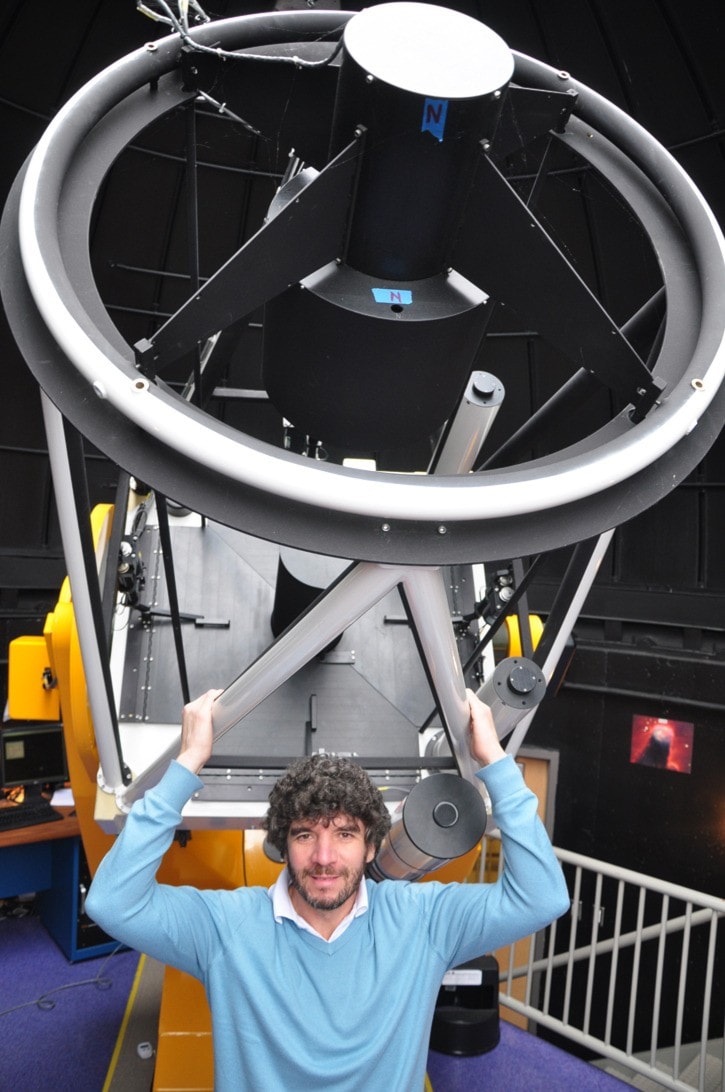Across our big old universe, objects orbiting other objects is a common astronomical pastime. The moon orbits the Earth, the Earth orbits the sun, the solar system orbits the galactic centre of the Milky Way.
A collaboration of astrophysics and astronomers, including two from the University of Victoria, have discovered something weird – a cluster of small “dwarf” galaxies is rotating in an orderly fashion around Andromeda galaxy, our nearest intergalactic neighbour.
This planet-like behaviour among galaxies has never been detected before and it fails to fit established models of how galaxies evolve. What’s more, the orbit of these dwarf galaxies around Andromeda is so vast, a single rotation is longer than the age of the universe. They haven't made it around once. A paper discussing this phenomenon was published Friday in the journal Nature.
“It’s a sobering reminder of how fragile our understanding of these things are,” said UVic astrophysics professor Julio Navarro, one of 16 lead scientists involved in the project. “How this is moving cannot be explained. Why a giant structure of galaxies rotate is uncanny, it’s not well understood yet. But it’s cool enough to point out.”
The discovery emerged from the broader Pan Andromeda Archaeological Survey, a three-year survey of a large region of space surrounding Andromeda galaxy, using the 3.6 metre Canada-France-Hawaii Telescope, in Hawaii. UVic professor Alan McConnachie, based at the Herzberg observatory in Saanich, led that project and is another co-author of the paper.
Out of the mass of observations, the team honed in on a number of dwarf galaxies in the neighbourhood of Andromeda, and then followed up with more telescope observations to measure their relative velocities. Rather than randomness, they found uniformity.
Navarro admits he was skeptical when the data started to suggest a group of 15 dwarf galaxies were orbiting in a well-defined plane a million light years in diameter, but only 30,000 light years thick, a similar structure to how planets orbit a star.
“I thought it would be hard to explain. We haven’t seen this often, if ever,” Navarro said. “Most models know how satellite galaxies form. They don’t form. They come over one by one and don’t form a coherent structure.
“I was skeptical at the beginning. It took quite a bit of convincing within the collaboration that we had not missed something. But our confidence grew that this was not a product of chance.”
Due to its sheer size and a spin cycle older than the universe, the apparent forces involved in these orbiting dwarf galaxies are much different than what rotates a galaxy on its axis, or planets around a star, Navarro said.
His personal pet theory is that these galaxies aren’t rotating at all – that they are part of a “filament” of dwarf galaxies being consumed by Andromeda, and are moving with a velocity that mimics rotation from our vantage point on Earth.
“It might not be an orbit, it might be an object that coming in (to Andromeda) for the first time,” he said. “It is still odd.”
Although this discovery adds a new mystery into the cosmological mix, Navarro, a theorist by trade, isn’t ready to chuck out the theories on galaxy dynamics built from decades of computer modelling and backed by observation.
“Facing an odd finding points to us either not understanding the detailed theory, or that the theory is incorrect. It’s a reminder that there’s a constant need for discovery, and discovery pushes us farther. You learn more from the unexpected than the expected.”
Check out a video of the discovery at http://astro.unistra.fr/Cosmic_Order/Site/Film.html
Navarro will talk about current theories of cosmology for the general public at Café Scientifique on Tuesday, Jan. 8, 6:30 p.m., at Hermann’s Jazz Club. Admission is free. For more click here.
editor@saanichnews.com
